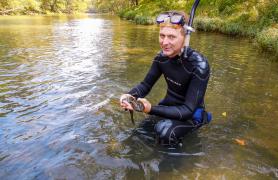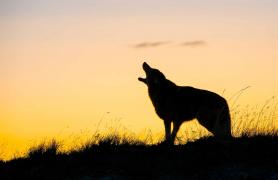Body
Your guide to all the unusual, unique, and unbelievable stuff that goes on in nature.
- Huddle up! Golden mice build softball-sized nests in bushes and trees. Usually only one mouse lives in each nest. But on chilly winter days, up to eight mice may crowd inside to stay warm.
- Ducks can be sorted into two groups based on how they get food. Dabbling ducks find food by dipping their heads underwater, leaving their bottoms high and dry. Diving ducks plunge below the water’s surface to snag soggy snacks.
- Super sneakers: When stalking prey, bobcats place their back paws in the exact same places that their front paws once were. This helps the cat stay purrfectly silent, so it can slink close before pouncing on prey.
- Although they can’t see well with their eyes, a hellbender’s wrinkly skin is covered with light sensitive cells. Scientists think the cells help the aquatic salamanders know when they’re safely hidden under shady rocks.
- The brown, fluffy part at the top of a cattail stalk may contain over 200,000 tiny seeds. When the wind blows, the seeds can sail more than 100 yards away from the parent plant.
- White-breasted nuthatches and brown creepers approach bug hunting from different angles — literally.
- Nuthatches usually start at the top of a tree and climb down. Creepers start at the bottom and spiral up.
- Alligator gar are freakishly large and covered in armorlike scales. The scales, which are made of a substance similar to tooth enamel, are so hard and sharp that Native Americans used them for arrowheads.
Also In This Issue
Media

Body
Jeff Briggler watches over Missouri’s biggest salamander.
Media

Body
Meet Missouri’s yappy, snappy, quick, and crafty wild dogs.
And More...
This Issue's Staff
Bonnie Chasteen
Les Fortenberry
Angie Daly Morfeld
Noppadol Paothong
Marci Porter
Mark Raithel
Laura Scheuler
Matt Seek
David Stonner
Stephanie Thurber
Cliff White
Les Fortenberry
Angie Daly Morfeld
Noppadol Paothong
Marci Porter
Mark Raithel
Laura Scheuler
Matt Seek
David Stonner
Stephanie Thurber
Cliff White






















